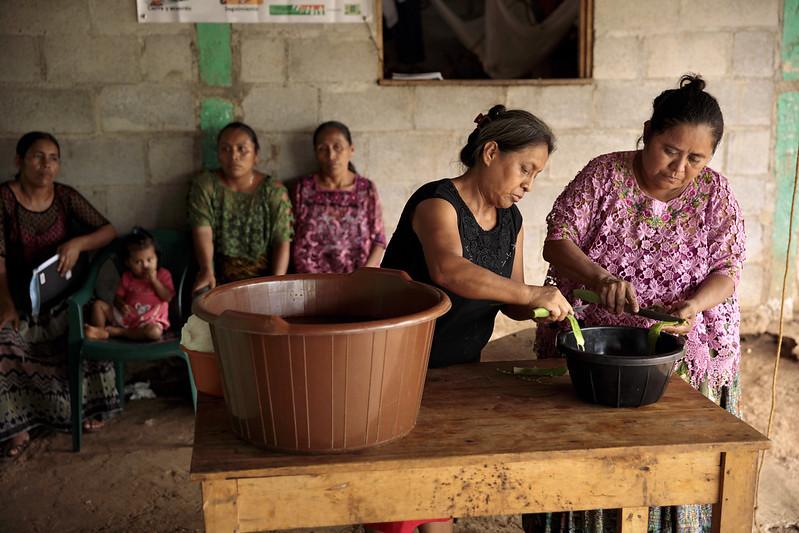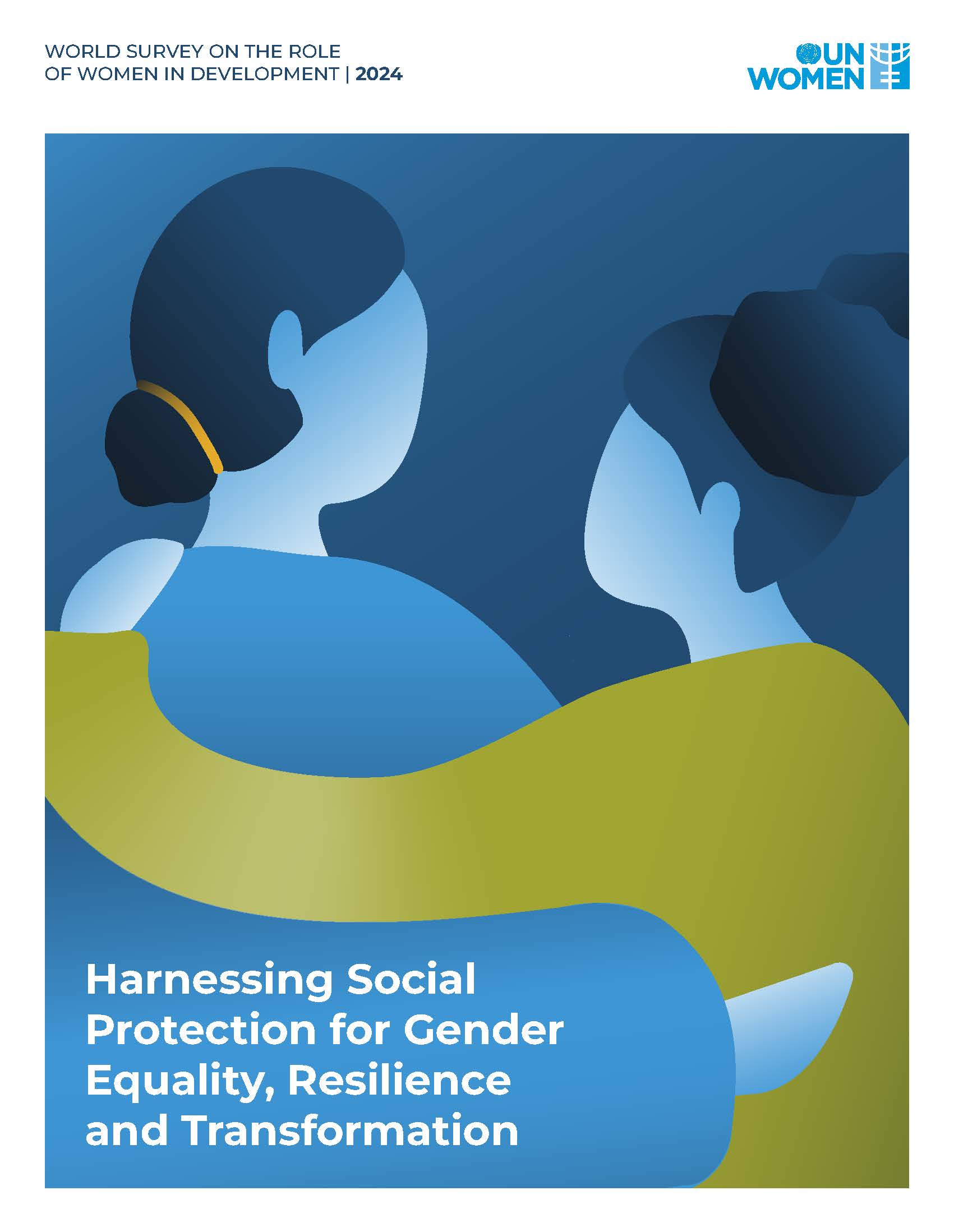
The twin crises of the COVID-19 pandemic and war in Ukraine created a global upsurge in inflation from 2022 – 2023 that led to a cost-of-living crisis, disproportionately impacting women and girls. As average global inflation peaked at 9.8% in 2022 and essential food and energy costs spiked, women – who often earn less and shoulder more unpaid domestic and care work than men – faced heightened financial strain. With mounting pressures on household budgets, women often act as “shock absorbers” during economic crises by opting for cheaper but more time-consuming ways of getting and preparing food for their families, or eating least and last.
For UN Women’s new report, World Survey on the Role of Women in Development 2024, we analysed the global policy response to the cost-of-living crisis to see how countries addressed gender-impacts of this crisis.
Only one in five measures to counter inflation-induced costs addressed women’s needs
Proportion of cost-of-living measures targeting women’s economic security and unpaid care work, globally
Out of nearly 1,000 (998) social protection measures rolled out across 171 countries or territories between December 2022 and May 20231 we found that only 21% of measures taken can be considered gender-sensitive – with 18% targeting women’s economic security and 3% targeting unpaid care. This represents 207 total gender-sensitive cost-of-living measures spread across 100 countries or territories.
At least 100 countries or territories implemented gender-sensitive measures to tackle the cost-of-living crisis, but stark regional disparities persist
Two regional clusters led the gender response: Europe and Northern America, Australia and New Zealand; and sub-Saharan Africa, which together accounted for a little over two-thirds of all gender-sensitive measures globally (37% and 31% respectively, in part due to the comparatively larger number of countries in each regional cluster). In contrast, all other regional groups each contributed to less than a tenth of the global gender response.
Total number of gender-sensitive cost-of-living measures, by type and region
More than 85% of gender-sensitive measures focused on women’s economic security, underscoring the financial nature of the crisis
A total of 180 measures across 94 countries and territories aimed to support women’s economic security. The most common response – social assistance, primarily in the form of cash or in-kind support targeted to women – helped offset rising costs of essentials like food and cooking gas, with 127 measures across 73 countries/territories, including Cambodia, Egypt, Fiji and Peru.
Subsidies also played a key role, with a total of 33 subsidy measures. This includes, for instance, 15 countries that implemented 21 agricultural subsidies targeted toward small-scale farmers – among whom women are overrepresented – to offset seed and fertilizer prices and boost food production. Some countries – like Cameroon, Malawi and South Sudan – went further, providing women with access to climate-resilient agricultural inputs, jobs or training. In Cameroon, for example, women beneficiaries in climate-distressed areas received cash transfers to support food security, alongside climate-resilient public works and training programmes in energy efficiency, recycling and low-carbon food production.
Though uncommon, price controls on essential household goods explicitly included menstrual hygiene products in Greece, Réunion and Sint Maarten.
Number of cost-of-living measures supporting women’s economic security, by policy type
While not explicitly gender-sensitive, broader pro-poor measures such as minimum wage increases (43 measures across 38 countries or territories) and housing and transport support (32 measures across 25 countries or territories) likely helped women indirectly mitigate the cost-of-living crisis, even if they were not directly targeted.
Support for rising unpaid care demands comprised just 3% of gender-sensitive measures
Globally, a mere 27 measures across 18 countries provided support for unpaid care in response to rising living costs.
The figure above shows that 10 countries offered extra cash compensation for unpaid caregivers (13 measures), including Armenia, Ireland and New Zealand. Another eight countries provided subsidized childcare, disability or elderly care, to ensure low-income groups could still access them – examples include Canada, Finland and Slovenia.
Portugal stood out with its “Famílias Primeiro” (Families First) support package, which provided extra income support for informal caregivers, including those beyond immediate family members, and expanded their access to training or counselling.
Cost living measures across policy categories
Gender-responsive policy responses fell short, but some COVID-19 measures were sustained
Even though the prior COVID-19 pandemic had already raised public awareness about the gender impacts of crises, a similar overall share of gender sensitive social protection and jobs measures was identified in the first two years of the COVID-19 response (20%), showing little global progress in integrating gender concerns into crisis planning since then.
However, some countries did build on emergency measures from past crises, including COVID-19 or climate-related disasters, to provide more lasting support. For example, Ethiopia expanded the shock-responsive component of its long-standing Adaptive Safety Net Programme with a USD 37.5 million boost, reaching 1.4 million new beneficiaries, half of whom were women, to tackle unprecedented levels of food insecurity stirred by conflict, drought and inflation.
The evidence is clear: accelerated action is needed to put gender equality at the center of crisis response and preparedness. This means closing gender gaps in routine social protection before crises occur, sustaining and adapting existing programs to address women’s risks and vulnerabilities during crises, and integrating social protection with broader policies that support women’s employment and redistribute unpaid care in recovery efforts.
For more information on how social protection systems can foster the resilience of women and girls during crises, see the World Survey on the Role of Women in Development 2024.
1 Data are from Gentilini, U., M.B.A. Almenfi, T.M. Matam et al. 2023. “Tracking Global Social Protection Responses to Inflation: Living Paper v.5.” Social Protection and Jobs Discussion Paper No. 2305. Washington, DC: World Bank. The full original data set contains 1,333 social protection policies, of which 333 tax and trade policy measures were excluded from this analysis, as were two measures identified as duplicates.



